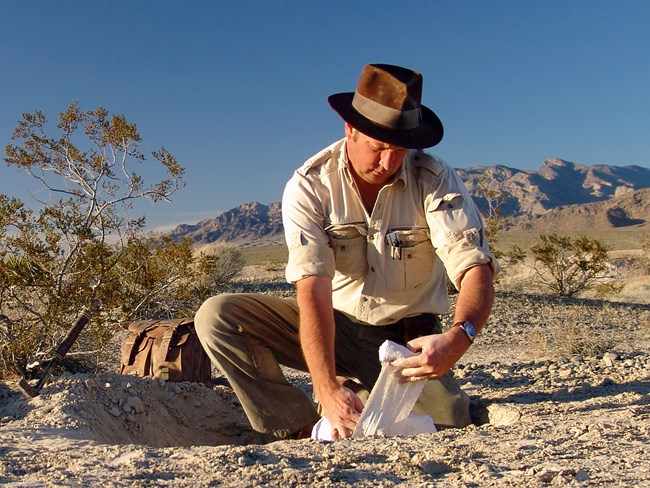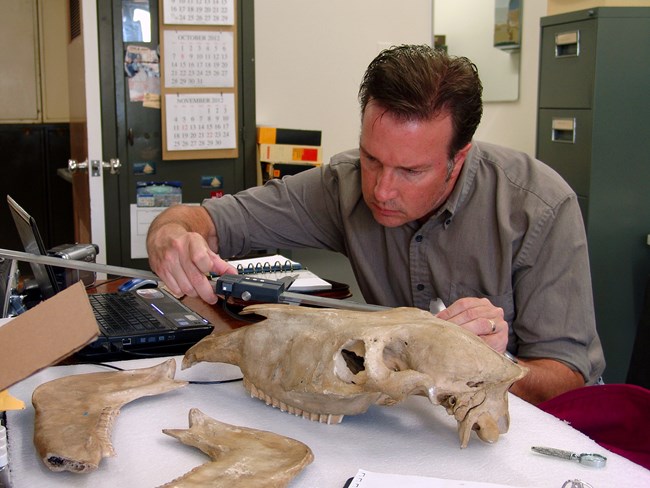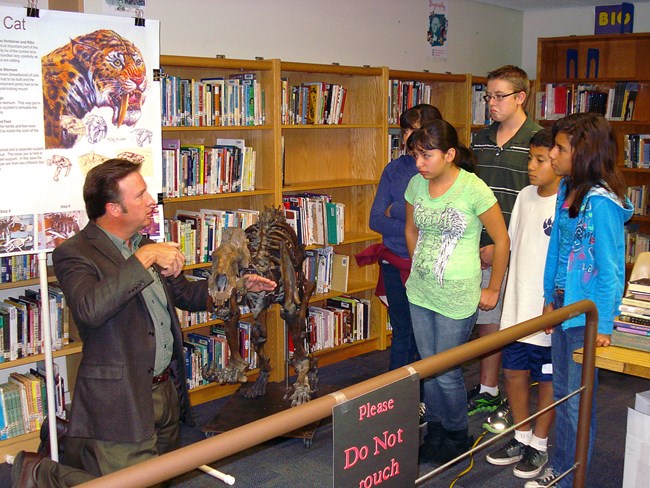Part of a series of articles titled Meet A Paleontologist.
Article
Eric Scott, Cogstone Resource Management, Inc.

NFD Kid's Page Interview...
What is your job, and what do you study?
I am a vertebrate paleontologist - I study animals with backbones. I am Principal Paleontologist for Cogstone Resource Management, Inc., a consulting firm in southern California. I am also an adjunct instructor at California State University, San Bernardino. My main focus is on Ice Age mammals - mostly horses and bison, with some tapirs thrown in for fun. (Tapirs are cool.)
What are you working on now?
Our team at Cogstone is finding Ice Age fossils in subway excavations near the famous Rancho La Brea “tar pits” in Los Angeles, as well as elsewhere throughout southern California. All those fossils keep me busy! Beyond that, my own research examines Ice Age horse evolution and extinction in western North America - it's amazing how much we still don't know about these animals! I'm studying horse fossils from Rancho La Brea, Las Vegas NV, and Joshua Tree National Park, as well as from multiple different cave sites all over the Mojave Desert, from Texas and Colorado, from Alaska and the Yukon, and even from Mexico. I'm trying to determine how many species of horses we had here during the Ice Ages, why they went extinct, and how that can inform our understanding of the biology of living wild horses. I’ve also recently branched out into studying Plio-Pleistocene horse fossils from Ethiopia!

Where did you go to school? What were some of your favorite classes that you took?
I did my undergraduate work at California State University, Northridge, then went to graduate school at the University of California, Los Angeles, where I got my degree. As you'd expect, I really loved the classes where bones and fossils were the focus - osteology, vertebrate morphology, paleoanthropology, and so forth. But I supplemented my schooling by volunteering at natural history museums, and that’s actually where a lot of my "hands on" learning took place - and where I learned to love learning.

Was there an experience you had that made you realize you wanted to be a paleontologist?
When I was five or six years old, my mother gave me a book called "The How and Why Wonder Book of Dinosaurs". I was hooked from then on. As a teen, I got a little sidetracked by other things - girls, cars, the usual teenager stuff. But then I started volunteering at the George C. Page Museum at the "tar pits" when I turned 16, and that locked me right into paleontology. In 1982, I read Donald Johanson's book "Lucy: The Beginnings of Humankind", and that book sold me on the idea that I could have a career working with fossils. (The movie "Raiders of the Lost Ark" helped, too!)
What is your most memorable experience working with fossils?
There are so many experiences! I have lots of great memories from field work, from working in museums, and from meeting fellow paleontologists who are now great friends. But I suspect the best experience was finding fossils in the Mojave Desert in May, 1994, when I also met a young paleontology student named Kim, who is now my wife. You just can't beat a discovery like that! (In terms of actual fossils, I did
Do you have any advice for aspiring paleontologists?Get your hands dirty! Get involved. Don't just focus on schooling - find a local institution and see if you can volunteer there. Do that, and you'll get to work with fossils in a way schools frequently don't provide. If you do study formally, don't just look for science classes - get proficient at writing and reading, too, since those are critical tools for any scientist.
Last updated: September 7, 2017
